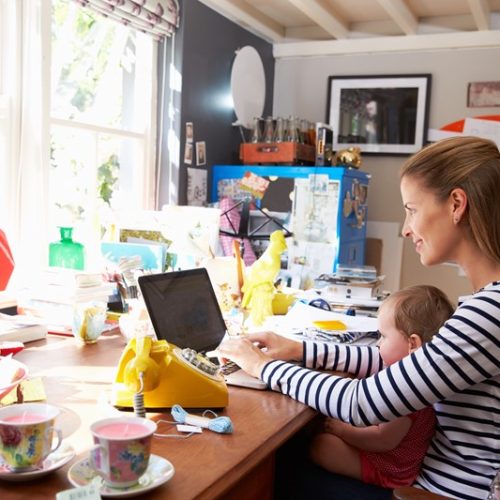

As of April 2025, more employers can claim the increased £10,500 Employment Allowance thanks to relaxed eligibility rules. This increase will help employers reduce some of the impact of the recent increases in employers' NIC.
The Employment Allowance allows eligible employers to reduce their National Insurance liability. The current allowance that applies from April 2025 is £10,500. Previously, the allowance was £5,000 per year. You can claim less than the maximum if this covers your total Class 1 NIC bill.
A claim for the Employment Allowance is usually made when filing your Employer Payment Summary (EPS) as part of the Real Time Information (RTI) submissions to HMRC.
The previous eligibility restriction, which limited the allowance to businesses with less than £100,000 in annual employer NIC liabilities, was removed with effect from April 2025. This change means that more employers can now qualify for the allowance.
Connected employers or those with multiple PAYE schemes will have their contributions aggregated to assess eligibility for the allowance. The Employment Allowance can be used against employer Class 1 NICs liability. It cannot be used against Class 1A or Class 1B NICs liabilities. The allowance can only be claimed once across all employer’s PAYE schemes or connected companies. De minimis state aid rules may also apply in restricting the use of the allowance.
Employment Allowance claims need to be re-submitted each tax year. There are a number of excluded categories where employers cannot claim the employment allowance. This includes limited companies with a single director and no other employees, employees whose earnings are within IR35 ‘off-payroll working rules’ and someone you employ for personal, household or domestic work (unless they are a carer or support worker).

Starting work this summer? Download the free HMRC app to get your NI number, check your tax code and stay on the right pay.
Young people finishing exams and entering the job market this summer are being urged by HMRC to download the HMRC app. The app is a free tool that can be used to provide quick access to essential employment and tax details. The app has already been downloaded by over 1.2 million people aged 25 and under. The app offers instant access to your National Insurance (NI) number, tax code, pay details and employment history.
This can be very useful information to have on-hand during the summer months when some 40,000 extra young workers are employed each month. Whether you're applying for work in hospitality, retail, leisure or seasonal roles like fruit picking, the app helps you stay job-ready with minimal hassle. Once employed, the app ensures you're on the correct tax code and receiving the right pay under the National Minimum Wage.
More than 146,000 people called HMRC last year after losing their NI number, but it is far quicker to retrieve it via the app where it can also be saved in your phone’s digital wallet. Nearly 90,000 users under 25 downloaded their NI number this way in the 12 months to April 2025.
The HMRC app is available to download, for free from the App Store for iOS and from the Google Play Store for Android. Once signed in, users can access it securely via face ID, fingerprint or a 6-digit PIN.
Young people are also reminded to check their payslips regularly to ensure they’re getting paid what they’re entitled to receive under National Minimum Wage requirements. Any underpayment concerns should be reported to HMRC or ACAS.

HMRC’s CEST tool gets a revamp from 30 April 2025, with clearer questions and updated guidance to help users decide employment status for tax—plus stronger backing from HMRC.
In a Written Ministerial Statement delivered on 28 April, the Exchequer Secretary to the Treasury announced a series of administrative and simplification measures designed to advance the government’s commitment to modernising the tax and customs systems.
Among these measures is an important update to HMRC’s Check Employment Status for Tax (CEST) digital tool, set to take effect from 30 April 2025. The CEST tool plays a key role in helping users determine whether a worker should be treated as employed or self-employed for tax purposes across both the private and public sectors.
The forthcoming changes aim to improve usability and clarity, making it more accessible and efficient for individuals and organisations alike. In conjunction with these technical improvements, HMRC will issue updated guidance to support users in navigating the revised set of questions, ensuring they are better equipped to use the tool correctly and confidently.
The service provides HMRC’s view as to whether IR35 legislation applies to a particular engagement and whether a worker should pay tax through PAYE as well as helping to determine if the off-payroll working in the public sector rules apply to a public sector engagement. HMRC has confirmed that it will stand by the outcome produced by the CEST tool, provided that the information entered is accurate and complete. However, HMRC will not stand by the results of contrived arrangements and designed to get a particular outcome from the service.
The service can be used by a variety of users, including:

If employees must work from home and their employer does not reimburse certain costs, they may be entitled to claim tax relief. Understanding the rules for household expenses, business travel, and equipment purchases is key to making a successful claim.
Eligibility to claim tax relief applies when homeworking is a requirement of the role. This may be the case if an employee's job necessitates living at a distance from the office, or if the employer does not maintain a physical office. Tax relief is generally not available where homeworking is a personal choice, even if permitted under the terms of the employment contract or where the office is occasionally at capacity.
Employees may claim a flat-rate tax relief of £6 per week (or £26 per month for monthly-paid staff) to cover additional household costs incurred as a result of working from home, without the need to retain detailed expense records. The value of the relief depends on the individual’s highest marginal rate of tax. For example, a basic-rate taxpayer (20%) would receive £1.20 per week in tax relief (20% of £6). Alternatively, individuals may opt to claim the actual additional costs incurred, provided they can supply evidence to HMRC in support of the claim. Backdated claims for up to four previous tax years are also permitted.
Tax relief may also be available for the use of a personal vehicle, a car, van, motorcycle, or bicycle, when used for business purposes. Relief is not available for ordinary commuting between home and a regular place of work. However, where travel is to a temporary workplace, or where the vehicle is used for other qualifying business journeys, tax relief may apply.
In addition, employees may claim tax relief on the cost of equipment purchased personally for work-related purposes, such as a laptop, office chair, or mobile phone, provided these are used exclusively or primarily for business use.

Minimum wage rates rose on 1 April 2025. NLW now £12.21, and big increases for younger workers too. Make sure you're compliant – underpayment can cost up to £20K per worker and a director ban. Time to check your payroll!
Employers must ensure they are paying staff at least the National Minimum Wage (NMW) or National Living Wage (NLW). The NMW and the NLW are the minimum legal amounts that employers must pay their workers.
The new NMW and NLW rates came into effect on 1 April 2025. The NLW rate has now increased from £11.44 to £12.21. This represents an increase of 77p or 6.7%. The NLW is the minimum hourly rate that must be paid to those aged 21 or over. The increase represents a pay rise of over £1,400 a year for someone working full-time and earning the NLW.
The NMW (for 18-20 year olds) has increased from £8.60 to £10.00 an hour. This is largest increase ever in the NMW (a whopping 16.3% increase) that means younger workers having their pay boosted by up to £2,500 a year. This increase is part of a move to narrows the gap in wage rates for 18-20 years olds and the NLW and ultimately create a single adult wage rate for all those aged 18 and up.
The NMW rates for 16 to 17 year olds increased from £6.40 to £7.55 – an increase of £1.15 or 18% per hour. The Apprentice Rate mirrors this increase.
It is important that employers ensure they have updated their wage rates and that they pay the legal minimum wage rates. There are significant penalties for employers who are found to have paid workers less that they are entitled to by law. If an employee has been underpaid, the employer must pay any arrears without delay. There are penalties for non-payment of up to 200% of the amount owed. The penalties are reduced by 50% if all of the unpaid wages and 50% of the penalty are paid in full within 14 days.
The maximum fine for non-payment can be up to £20,000 per employee and employers who fail to pay face up to a 15-year ban from being a company director as well as being publicly named and shamed.

As the UK tax year ends on 5 April, employers must complete several key payroll tasks to stay compliant with HMRC. Processing the final payroll run is essential, ensuring all pay, deductions, and benefits are correctly recorded. The final Full Payment Submission (FPS) must be sent to HMRC on or before the last payday, along with an Employer Payment Summary (EPS) if required.
Employers must provide P60s to all employees who were on payroll at the year-end by 31 May 2025. These summarise total earnings and deductions, and employees rely on them for tax returns or financial applications. It’s also crucial to ensure all P45s have been issued correctly for any leavers.
If benefits like company cars or private healthcare were provided, these must be reported via P11D forms by 6 July 2025. Employers also need to pay Class 1A National Insurance on benefits by 22 July 2025. For those using payrolling benefits, all records must be accurately maintained.
Ensuring that PAYE and National Insurance Contributions (NICs) are up to date is crucial, with final payments for the tax year due by 22 April 2025. Updating employee tax codes for the new tax year is equally important, as HMRC issues revised codes on 6 April. Payroll software should be updated to reflect changes in tax thresholds, National Insurance bands, and minimum wage rates.
Submitting a final Employer Payment Summary (EPS) by 19 April 2025 is necessary if reclaiming statutory payments. Employers should also conduct a payroll audit to verify employee details and deductions. Staying aware of legislative changes in the new tax year, including updates to income tax thresholds and statutory pay rates, ensures compliance and smooth payroll processing.

If redundancy strikes, you could receive up to £30,000 tax-free. Whether it’s statutory or a more generous employer offer, understanding your entitlements and the latest caps on weekly pay can make a real difference to your finances.
There is a tax-free threshold of £30,000 for redundancy payments, regardless of whether the payment is your statutory redundancy pay, or a more generous amount offered by your employer.
If you have been employed for two years or longer and are made redundant, you are typically entitled to redundancy pay. The legal minimum you are entitled to receive is known as "statutory redundancy pay." However, there are exceptions to this entitlement, such as if your employer offers to retain you in your current role or provide suitable alternative employment, and you refuse the offer without a valid reason.
The amount of statutory redundancy pay is determined by your age and length of service, and is calculated as follows:
Weekly pay is capped at £700, with a maximum of 20 years of service considered. The maximum statutory redundancy payment for the tax year 2024-25 is £21,000, with slightly higher limits applicable in Northern Ireland. The cap on weekly pay for redundancy calculations is expected to increase in April 2025, though details have yet to be announced.
Employers may opt to offer a higher redundancy payment, or you may be entitled to an increased amount based on the specific terms outlined in your employment contract.

Employees working from home may be eligible to claim a tax deduction for certain job-related expenses. If your employer does not cover these costs or allowances, you have the option to claim tax relief directly from HMRC.
You may qualify for tax relief if you are required to work from home. This could apply if your job necessitates living far from the office or if your employer does not have an office. However, tax relief is generally not available if you opt to work from home, even if your employment contract permits it or if your office is occasionally full.
You can claim tax relief for £6 per week (or £26 per month if paid monthly) to cover additional costs associated with working from home, without the need to maintain specific records. The amount of tax relief you receive depends on your highest tax rate. For example, if you pay the basic rate of 20% tax, you will receive £1.20 per week in tax relief (20% of £6). Alternatively, you can claim the actual amount of additional costs incurred, but you must provide evidence to HMRC. HMRC accepts backdated claims for up to four tax years.
You may also be entitled to claim tax relief for using your personal vehicle, whether it is a car, van, motorcycle, or bike. Generally, tax relief is not available for regular commuting to and from your usual workplace. However, the rules are different for temporary workplaces, where such expenses are usually allowable, or if you use your vehicle for other business-related travel. Additionally, you may be able to claim tax relief on equipment purchased for work, such as a laptop, chair, or mobile phone.
Should your employer not cover these expenses or allowances, you can claim tax relief directly from HMRC.